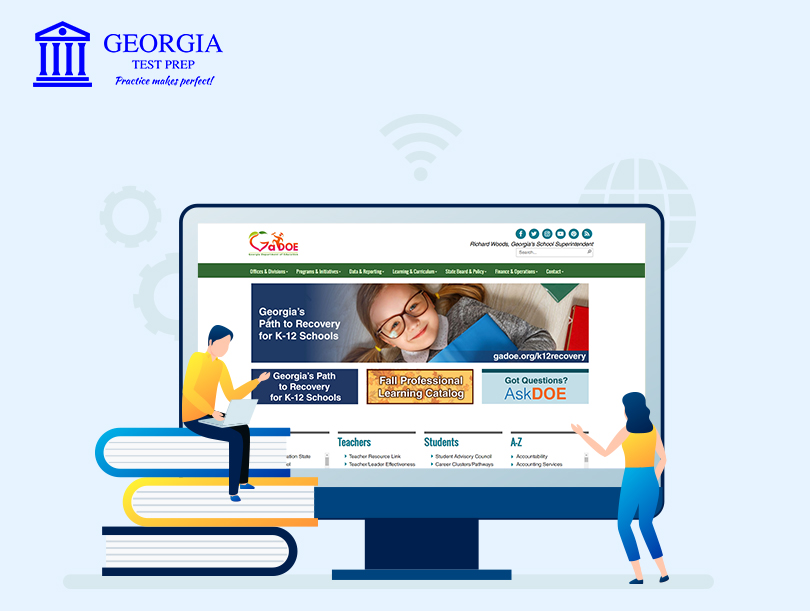How to Help Students Get Themselves “Unstuck”

Your student (or child) is trying to solve a math problem. They’ve been staring at the paper for a while now. You can almost feel their struggle. You can see the wheels turning, but no progress is being made. Finally in frustration they blurt out, “I’m stuck!”
We’ve all been there – in life we are often faced with problems that we cannot find an immediate solution to. We experience a kind of paralysis of decision-making because we simply don’t know how to proceed.
So, seeing your student or child in this position, what do you do?
Beware of learned helplessness
We need to avoid the temptation to immediately provide solutions. If students are always given a way out whenever they get stuck, it could lead to “learned helplessness”.
Learned helplessness is a condition whereby they believe they cannot do anything without help (especially when they expect help to always come). So whenever they are faced with a problem, they immediately give up rather than try to solve it.
Importance of teaching problem solving
Real life is full of problems that are complex, without well-defined and straightforward solutions. Children will have to be able to identify and apply various strategies to solve these problems.
Children will not always have their parents and teachers to help them. They need to learn to become problem solvers – that is the deeper purpose of their education. But problem solving skills don’t come naturally; they need to be built through instruction and practice.
To this end, we need to be helping students to be able to think about achieving a particular goal and how to manage their mental processes in doing so. This is called “metacognition”, and will help students become better problem solvers.
This post covers how to approach teaching problem solving to the end of helping students get themselves unstuck.
There are a couple of things we need to understand before we proceed:
- You must be patient. We’ve all learned something new at some point or another, and we know how difficult it can be. Everyone progresses at a different pace. Don’t give in easily and give them the solution, that will negatively influence them to give up early.
- Students must be allowed to struggle! They must even be allowed to feel the frustration and pain of it. It’s all part of the learning process. It’s not just about teaching them problem-solving skills, they also need to learn to deal with the emotions that come with getting unstuck.
Alright then, without further ado let’s get into it!
How to help students get themselves “unstuck”
Make “being stuck” positive
Instil the attitude that getting stuck is a positive sign, and call it what it is: an indication that we are growing. Getting stuck means we have an opportunity to learn something.
Normalize the idea of “getting stuck”. Use positive language when helping them get unstuck. Teach your kids to recognize the quality of being stuck and to approach it with a positive mindset. This is something they can carry with them for the rest of their life.
Get students talking
Instead of just giving them the answer, get them to verbalize their difficulties. The more they talk about the problem, the more it helps them get unstuck.
If no one is around, encourage them to set up their own internal dialogue. They can ask themselves, “What do I know?”, “What do I need to know?”, and “What methods do I have at my disposal?” The simple act of talking the problem out will help them organize their thoughts and get specific about where they are stuck.
Find out what they know
This will help hone in on the real area of “stuck-ness”.
Being stuck can tend to feel like this vague blanket of emotion that students don’t know how to navigate.
By determining what they do know, they can begin to plot a map out of the situation.
Find the root of their stuck-ness
Once they know what they know, ask them what exactly is making them feel stuck?
Is it the academic language? Is it the context they aren't familiar with? Do they have too many variables? Do they not see a pattern? This will require them to think more about the problem itself and what they need to overcome it. So when they are faced with a similar problem later, they will be able to think back to what helped them before.
Questions that you can teach your student to ask that force them to look more carefully at the problem they face:
- What do you know?
- Is this like any other question you’ve done?
- How is this different from the last question you did?
- Is there anything in the question you haven't used?
- What do you understand by this word/symbol?
Teach them to be wary of prior assumption
We all sometimes make assumptions about a situation that we may not even realize we are making. In teaching about problem solving, we need to also make sure students are aware of this tendency.
Help students think in terms of the information provided and not to make unwarranted assumptions.
Give them the language to solve problems
For instance, if a student writes the information from a math problem down in a chart, you can simply say: “Very good, you organized the important information into a chart.” This will give him or her the language to match what they did, so they now have a strategy they can use in other problems.
Encourage experimentation
When answers to a problem aren’t readily apparent, and you don’t know what will work, then sometimes the only option is to experiment and figure things out.
Build this habit in students who get stuck. See if they can approach a math problem with easier numbers, and build a method to follow up again. Or they can approach it with a trial-and-error methodology, trying out different things to see what works.
Also Read- How to Help Your Child Develop a “Growth Mindset”
Just start writing
Encourage your student to start writing instead of staring at a blank piece of paper. The mere act of writing something is enough to get into the flow of solving the problem.
Get them to write anything. They can start with jotting down the given information from the problem if nothing else, and maybe possible methods to solve the problem – anything that gets their mental juices flowing.
Draw something
Some problems lend themselves better to diagrams. Ask your student to “draw out” the problem if that helps them picture it better. This can be especially useful for word problems and geometry problems (which often require a diagram anyway).
Besides, drawing can be quite fun. It can inject a little creativity into solving math.
Check in with them
This doesn’t mean come to their rescue all the time!
By following the previous tips, you’ll be able to set your student on the path to solving a problem. Then check back in with them to see how far they were able to get after the previous intervention, and if they are still stuck then you can strategize the next plan of approach with them.
As far as possible, encourage them to self-remediate. They have all the information with them in the form of textbooks or online help. Let them look for what they need to solve their problem themselves (a skill that will be invaluable to them throughout life).
Remember, we don’t just want to teach our kids how to solve problems on the blackboard, we want them to grow up with the ability to be problem-solvers! Teaching them to get unstuck will not only help them in their schoolwork, but it will prepare them for life.
Share This Post
Tags
Follow Us
Subscribe to our blogs.
Don't miss any updates!
Related Blogs
Most Viewed Blogs
The Issues Parents Have Been Facing With Virtual Learning
School districts have done their best to plan learning contingencies due to the COVID situation. Som... read more
Everything You Need To Know About the Georgia Milestones Assessment System
If you’ve got a child in the Georgia state school system, then you’ve probably heard of the Geor... read more
5 Ways To Help Students Struggling With Reading Comprehension
Reading comprehension isn’t about being able to string words together, it’s about deriving meani... read more
Announcing the Launch of Georgia Test Prep
It is with great pleasure we announce that today we have launched Georgia Test Prep, an online solut... read more
7 Tips to Help Your Children Develop a Positive Attitude
In this Infographic, we have illustrated 7 tips to help your children develop a positive attitude. ... read more








